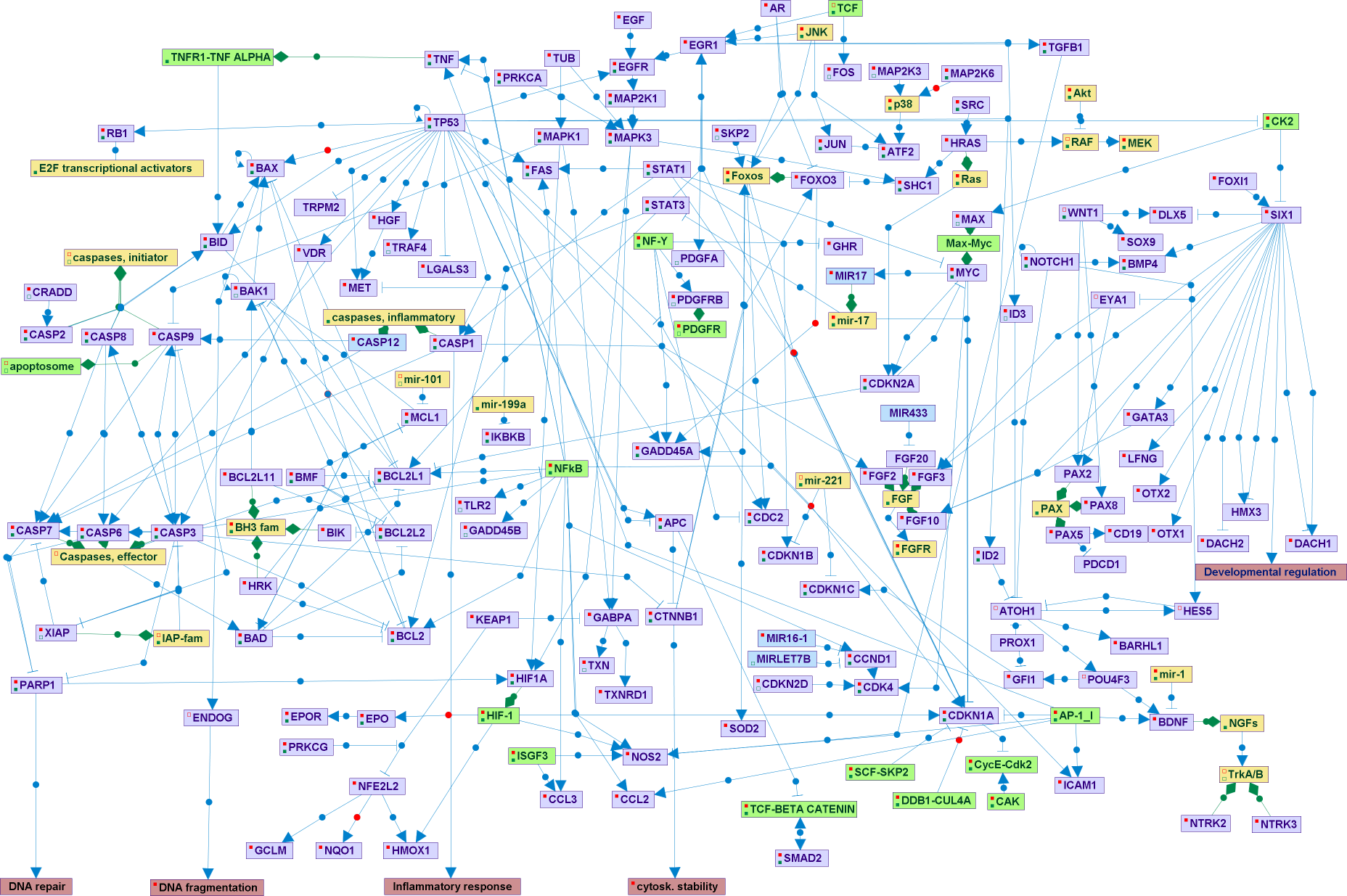Cell death in inner ear tissues is an important mechanism leading to hearing impairment. Studies have shown that members of several protein families such as superoxide dismutases (SODs), Bcl-2, caspases (Casp) and calpains (Calp) contribute substantially to cell death in the inner ear. Reactive oxygen species (ROS) play an important role in hair cell survival and in the induction of apoptosis. The most important line of antioxidative defence systems against ROS and particularly the superoxide anion radicals are the enzymes of the SOD family. The Bcl-2 protein family regulates the cell intrinsic apoptotic pathway. Caspases and calpains are important factors for the initiation and execution of cell death in the inner ear. Calpains are calcium-activated cysteine proteases, which in an intact cell exist in an inactive form. Calpains are involved in apoptosis because of their ability to cleave and thus activate several proteins that regulate progression of apoptosis, including caspases. Inhibitors of calpains were found to protect auditory sensory cells from hypoxia-induced cell and tissue damage. All these proteins and the interactions between them and other proteins create an intricate network, as is shown in the HEarSpike map.
